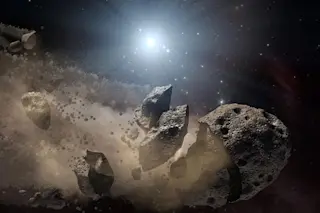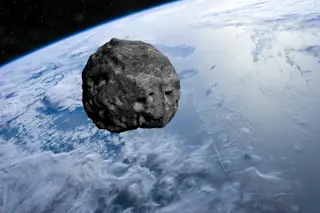Just a few million kilometers away lurks a mysterious, and possibly deadly, asteroid called (29075) 1950 DA. Since the rock’s discovery 65 years ago, scientists have learned the roughly mile-long body actually consists of a loose collection of smaller rocks, which they presumed were held together by their own gravity.
Asteroid (29075) 1950 DA might hit Earth in 2880, so the more we know about it, the better. (Credit: Alison Mackey/Discover after J. Giorgini/JPL)
Alison Mackey/Discover after J. Giorgini/JPL
But in 2007, scientists discovered that 1950 DA also spins quickly, once every two hours — far too fast for gravity to hold it together. How could this pile of rubble not tear itself apart?
In August, physicists at the University of Tennessee announced that the force that holds 1950 DA together is the same force that allows the fine hair on a gecko’s feet to stick to vertical surfaces: namely, ...















